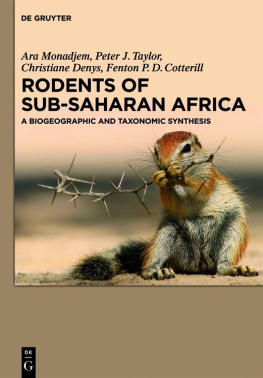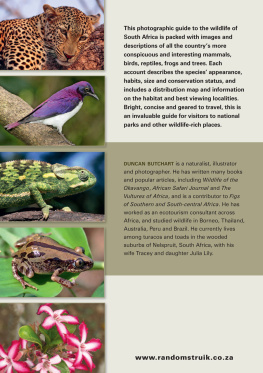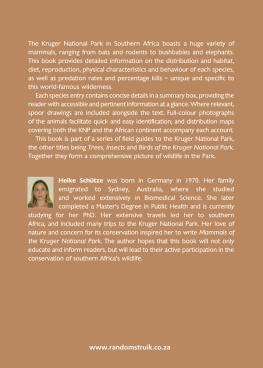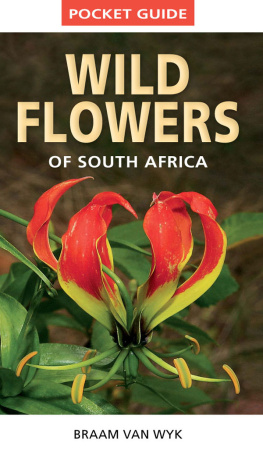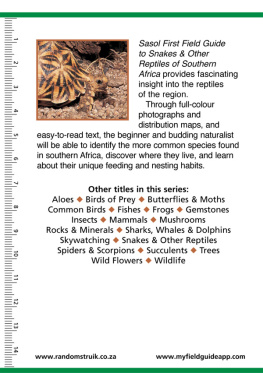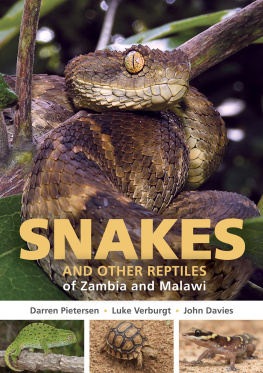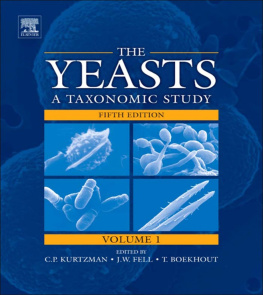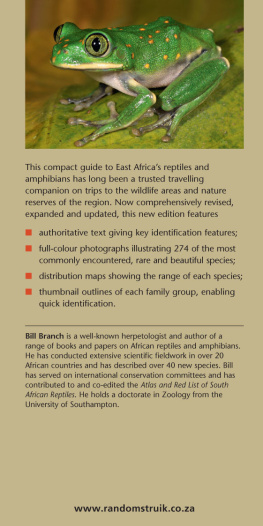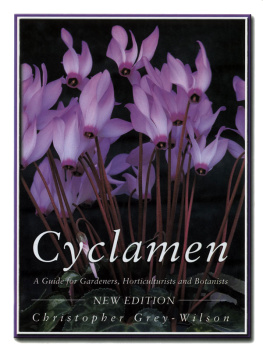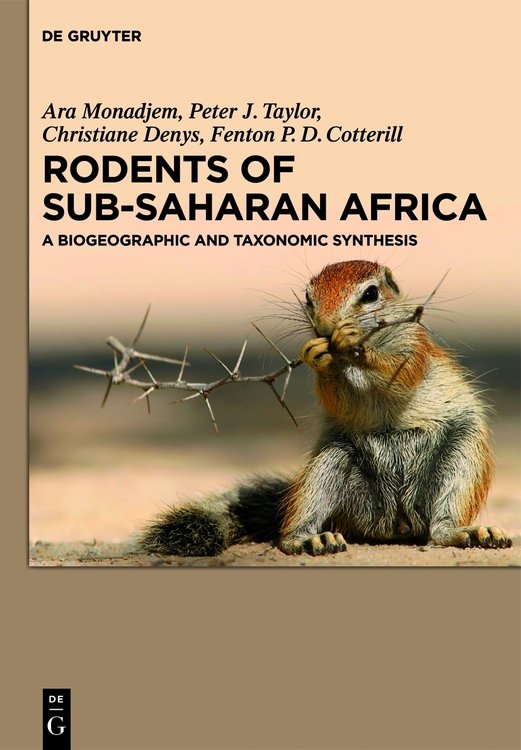Acknowledgements
It has become a clich to acknowledge the role of numerous players in the development of a book, whose input was deemed essential to the books successful publication. This book is no different. As a synthesis, this book owes its very existence to the works of previous small mammal researchers and enthusiasts. In particular, the distribution maps are drawn from tens of thousands of vouchered specimen records deposited in dozens of museums scattered around the globe. These humble museum specimens, and the persons that collected them, curated them and documented them are the real reason this book exists. This book is dedicated to all the museum workers who have toiled under difficult, and sometimes impossible, circumstances to ensure their collections not only survive, but continue to grow. Some of these institutions are mentioned below and the rest are listed in the General Methods and Layout of Book section. All the photographs appearing in the book have been acknowledged in the captions. We are sincerely grateful to all these people for making their images freely available to us. Bill Branch, Josef Bryja, Radim Sumbera and Darcy Ogada went out of their way to help locate suitable images for this book; without their generous support this book would have been significantly poorer.
Ara Monadjem
Dr. Teresa Kearney (Ditsong National Museum of Natural History, South Africa), Dr. Leigh Richards (Durban Natural Science Museum, South Africa), Simon Musila (National Museums of Kenya, Kenya) and Seth Eiseb (National Museum of Namibia) granted us permission to examine their small mammal collections and went out of their way to make our visits to their institutions as comfortable and productive as possible. I would like to thank my Head of Department Dr. Themba A. Mahlaba, himself a well-respected African small mammal expert, who has whole-heartedly supported my involvement with the writing of this book, including sanctioning several lengthy museum excursions. The rest of the lecturers in the Department of Biological Sciences at the University of Swaziland are sincerely thanked for making whatever sacrifices necessary to allow me to conduct the research needed for this project. Fezile Mtsetfwa is thanked for carefully checking all the references. Prof. Steven Belmain kindly reviewed the book and wrote the forward to the book. Dr. Bob McCleery, University of Florida, has provided valuable suggestions and input over the years. My wife, Dr. Sara Padidar, has had to put up with the usual nonsense associated with living with a field biologist, including long stints away in the field and getting up at ridiculous hours of the morning; but never with a single word (spoken or unspoken) of disapproval. Thank you! To my boys: Keyan, Damian and Liam, I hope that at least some of my passion for the study of wild animals has rubbed off.
Christiane Denys
I wish to thank the staff of the Musum national dhistoire naturelle (MNHN) (Mammalogy) that helped during the early process of collection consultation and allowed SEM images to be taken of many specimens (Michel Tranier, Jacques Cuisin). The late Francis Petter was a key promoter of this book. He participated in the earliest phase of the identification key and donated some of his personal photographs. We thank the different curators of collections that loaned to us some specimens, images or gave us access to holotypes of very rare species (Dr. Renate Angermann, Zoolo-gische Museum Berlin, Germany; Dr. Fritz Dieterlen, Stuttgart State Museum of Natural History, Germany; Dr. Leigh Richards, Durban Natural Science Museum, South Africa; Wim Wendelen, Museum for Central Africa, Belgium; Dr. Paula Jenkins, Natural History Museum, London, UK; Drs. Julian C. Kerbis and Bruce Patterson, Field Museum of Natural History, Chicago, USA). Most of the SEM pictures were taken thanks to a BQR grant from the MNHN (1992-1993) and UMR OSEB (2005, 2011). Dr. Philippe Grandcolas, Dr. Guillaume Lecointre and Mrs Sverine Deruyter (MNHN) provided administrative assistance for the visits of Ara Monadjem and Peter Taylor to the MNHN as invited professors. The late Mrs Laroche, Mrs Chancogne and Dr. Rausch are thanked for assisting with the taking of the SEM images. Guy Rabache is warmly thanked for the preparation of dental plates, some of the skull pictures, the scanning of negatives and of photographs.
Peter Taylor
I would like to thank the South African National Research Foundation (NRF) and the University of Venda for financial support and for study leave to complete this project through several study visits to museum collections in South Africa and France and to Swaziland. I am most grateful to all the museum curators who generously provided advice and access to collections, particularly Teresa Kearney (Ditsong National Museum of Natural History), Leigh Richards (Durban Natural Science Museum) and mammal curatorial staff of the Paris Museum of Natural History. Colleagues from the Ratzooman, Ecorat and Stoprats projects provided enlightening discussions and important insights into the economic importance of rodents and the need for improved taxonomy and field guides in order to optimally implement ecologically-based rodent management (EBRM) in Africa. As always, I am incredibly grateful to my wife Frances and four children (Ashleigh, Robyn, Lauren and Benjamin) for unstinting support and understanding.
Fenton P.D. Cotterill
Natural History Museum of Zimbabwe (Bulawayo) and Associated Mammal Surveys: Since the early 20th century, the commitments of many scientists and technicians collected the many rodent specimens preserved in the NMZB (including A. Ndlovu, K. Mkwananzi, L. Sango-Moyo, N. Sango-Moyo, F. M. Masiyandima, J. Chimombe and A. N. Sango). Special mention is due to R.H.N. Smithers who made so much possible, and W.F.H. Ansell and J. L. P. Lobo Tello who focused on pioneering small mammal surveys in Zambia and Mozambique, respectively. Participants, and high school expeditions - namely the Exploration Societies of the Falcon College, Girls College, Peterhouse and the Rhodesian Schools (and latterly Operation Raleigh) aided the collection of many specimens. For over three decades, the leaders of these trips, notably John Stakesby Lewis, organised these pedagogical expeditions in association with the Natural History Museum, almost annually and often into remote regions. Overall, it is important to underscore the efforts of Reay Smithers for directing small mammal collections for nearly four decades. By far the greatest part of the Smithers Legacy lies in the collaboration of the Rhodesian Museums with the Smithsonian Institution African surveys (driven by H.W. Setzer and carried out by many committed fieldworkers) made possible the remarkable discoveries of the Botswana Mammal Survey, and associated expeditions in Mozambique and Zimbabwe (see Schmidt et al., 2008).
Schmidt D.F., C.A. Ludwig and M.D. Carleton. 2008. The Smithsonian Institution African Mammal Project (19611972): An Annotated Gazetteer of Collecting Localities and Summary of Its Taxonomic and Geographic Scope. Smithsonian Contributions to Zoology 628: 1-320
Appendix
A checklist of the 463 rodent species recorded here as occurring in Sub-Saharan Africa, together with the conservation status (as of January 2014) of each species (IUCN, 2014): CR = Critically Endangered; EN = Endangered; VU = Vulnerable; NT = Near Threatened; LC = Least Concern; DD = Data Deficient; NE = Not Evaluated.

